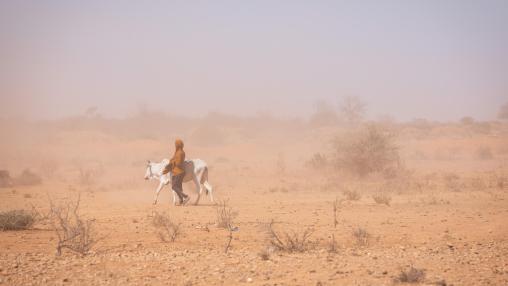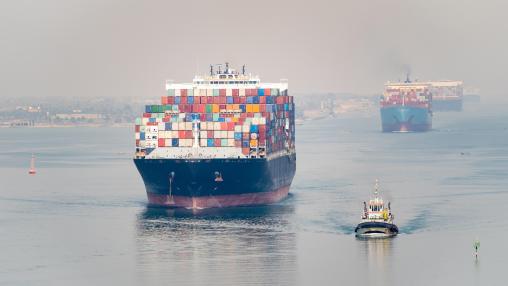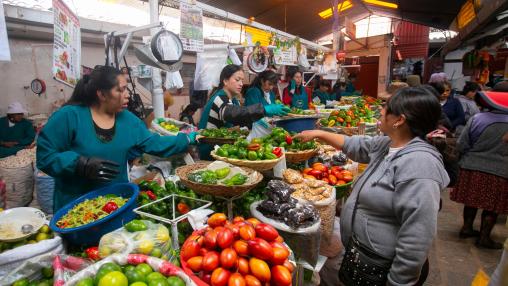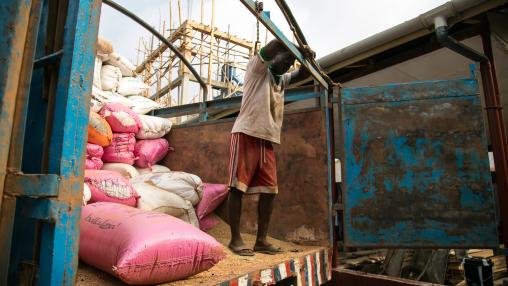
Disaster Events Lead to Trillions of Dollars in Agricultural Losses: New FAO Flagship Report Released
Over the past three decades, the world lost as much as $3.8 trillion in agricultural products as a result of disaster events, according to a new flagship report from the UN Food and Agriculture Organization. That equates to a loss of around 5 percent of global agricultural GDP per year and has serious implications for food security, agricultural livelihoods, and the sustainability of the global agrifood system.

Amid conflict and climate risks, FAO highlights crucial role of AMIS in global food market stability
In the face of escalating conflicts, economic slowdowns and downturns, and the growing climate crisis, the Agricultural Market Information System (AMIS) plays a crucial role in enhancing transparency and policy coordination in international food markets, Maximo Torero, Chief Economist of the Food and Agriculture Organization of the United Nations (FAO), has said.
Speaking at an expert panel at the Global Forum for Food and Agriculture (GFFA) 2024 in Berlin, he stressed how AMIS has helped to prevent unexpected price hikes and strengthen global food security.

Impacts of Red Sea shipping disruptions on global food security
The recent attacks of Yemen-based Houthi rebels on ships in the Red Sea have paralyzed shipping through the Suez Canal, forcing exporters in the Black Sea region and elsewhere to consider alternative—and more costly—shipping routes. In early January, A.P. Moller-Maersk A/S, the world's second-largest container ship company, announced it would suspend shipments through the Red Sea. Trade volumes in the Suez Canal are down an estimated 40% since the attacks began.

Report launch: The key role of trade in strengthening food security in Latin America and the Caribbean
Recent events such as the war in Ukraine and the El Niño weather cycle have demonstrated how shocks triggering changes in production and distribution of food in one country or region can reverberate around the world, eroding food security for millions if not billions. Efficient, agile, and diverse trade networks can help countries and suppliers to cope with these shocks and strengthen food security. These networks are especially relevant for Latin America and the Caribbean (LAC).
Food Security and Nutrition Indicators Dashboard
The dashboard visualizes global food security and nutrition trends, enabling comparison of key indicators through interactive maps and charts for informed policy analysis.

A new rapid assessment tool for food security risks posed by global price shocks
International food commodity prices have experienced a series of shocks over the past decade. The prices of rice, maize, and wheat spiked in 2007-08 as a result of supply shocks, demand for biofuels, and export trade restrictions. Commodity prices increased again in 2010-11. And most recently, global supply chain disruptions in the aftermath of the COVID-19 pandemic and Russia’s invasion of Ukraine sent international food and fertilizer prices soaring, though they have moderated somewhat after peaking in mid-2022.

Despite improved global market conditions, high food price inflation persists
Since peaking in April 2022, global agricultural food commodity prices have declined by almost 25% as of October 2023, according to the UN Food and Agriculture Organization’s (FAO) food price index (Figure 1). Contributing to the decrease were strong harvests in large food producing countries, steep declines in shipping costs, and more affordable energy and fertilizer prices (Figure 2).
The E-FooD dataset and Food Security Simulators for Kenya and Nigeria: Innovative Tools to Support National Policies and Strategies
Recent global food price spikes and household income losses pose significant challenges to people’s food security and diets, raising important questions for governments and international organizations about how best to support households. The new Income and Price Elasticities of Food Demand (E-FooD) dataset [https://doi.org/10.7910/DVN/OXZ0H6] and Food Security Simulators (FSS) provide rigorous, yet easy-to-use tools for forward-looking evaluations of direct, household-level outcomes of economic crisis and policy responses.
Implications of El Niño 2023/24 for Africa South of the Sahara
Climate scientists are anticipating an El Niño event in the upcoming boreal winter season (November 2023–February 2024), ending the recent three-year La Niña. In collaboration with USAID FEWS NET and NASA’s Goddard Space Flight Center, IFPRI is hosting a presentation on the potential impact of the upcoming El Niño on the global agrifood system, with special emphasis on low-income countries in sub-Saharan Africa. The event will be organized around four short talks.
Food Security and Agrifood Trade in Latin America and the Caribbean
This presentation will be in Spanish. Simultaneous translation to English will be available.